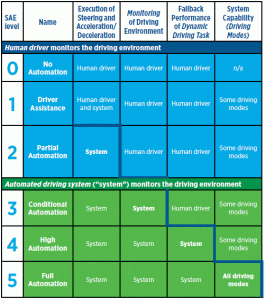Nowadays, who doesn’t have a car at the doorstep? Or, if this is not your case, the next question would be: nowadays, who doesn’t have two cars at the doorstep? In Portugal, 2014 statistics, say the around 90% of people travel by car21.
Our parents’ generation had the opportunity of acquiring a vehicle and our generations (80’s) grew up with this comfort. Even if the consequences of excessive use well known, who is going to stop using a car?
A few more minutes collecting statistics allow us to know that the prediction for the next few years show that the number of 65 years old will grow22. Older people, due to their experience, are the ones that show a bigger driving knowledge, being able to predict dangerous sceneries easily. However, at the same time, their age take this advantage from them, increasing the physical and mental limitations leading to an increased risk of accidents on the road17. Just like older people, people under the influence of alcohol and tiredness can see their ability to drive diminished, leading to an increase of the likelihood of an accident. Human error is the cause of 90% of all road accidents23, without taking in to account minor accidents that are not reported to the authorities.
The AV allows all these people to circulate in the interior without any interaction needed. This way, weakened and disable people are able to move independently, regardless of physical or mental problems that would prevent them to drive a vehicle.
But not everything is perfect. These advantages are also related to some problems when we drive our attention to the operational part. The AV, regardless of its evolution does not replace an human being. Weakened and disable people need help to get in and out of the vehicles. The adaptation of these vehicles to these problems should be investigated and developed to allow the integration of the biggest number of people.
But the arrival of autonomy will allow the mobility of a different group of people, that are not allow to drive today, like youngsters and children, due to their age and immaturity. Can we say that the extra travelling in the end of the day to drive the kids to practice or swimming are over? One more time operational issues have to be carefully thought like allowing kids to travel without supervision or safety.
The AV will have the goal of becoming a transport for everyone, however, the answers to some of the issues raised will be decisive on the integration of different groups of population.

